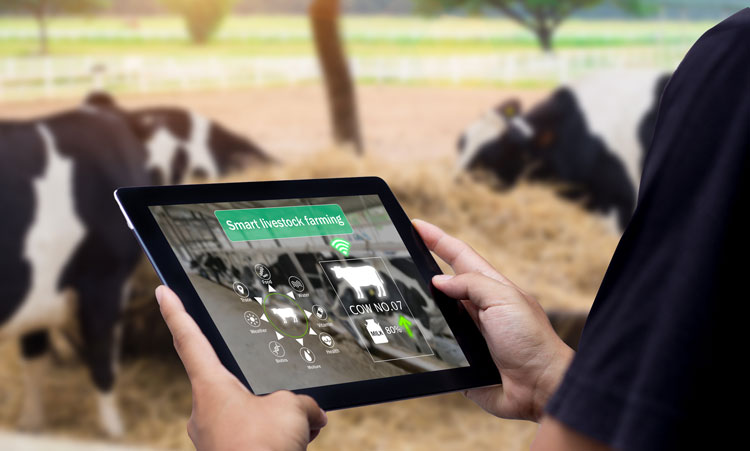
Animal care is often the most recognizable aspect of Farmers Assuring Responsible Management (FARM), but another important evaluation area is a newer program in the organization: environmental stewardship. Nicole Ayache, senior director of sustainability initiatives at the National Milk Producers Federation (NMPF), discussed this part of FARM during a recent Quick Convos episode.
Environmental stewardship was introduced as part of FARM in 2017, and just like animal care, it is built around second-party evaluations. Currently, 37 cooperatives and processors, representing roughly 78% of the U.S. milk supply, are enrolled in the environmental evaluation area.
Ayache described that the cornerstone of the environmental area is a calculator to help a farm determine its greenhouse gas (GHG) emissions and, more broadly, its energy footprint. The most recent Version Two also takes into account if a farm uses a nutrient management plan.
“Our farms are already doing a lot when it comes to the environment,” Ayache said. So why add another pillar to FARM? One reason is to assist dairy customers who are setting science-based targets to reduce GHG emissions along their entire supply chain.
“These retailers and brands are starting to say, ‘We want to make a difference not just in our four walls, but for everywhere we source from,’” she noted. In this way, FARM can help dairy users be more accurate in knowing and communicating with their customers what the dairy industry is doing.
Beyond the supply chain, measuring an environmental impact is important to keep U.S. dairy relevant and desirable in trade. That’s critical when around 14% of American milk is exported. “U.S. dairy’s competitors across the globe are talking about greenhouse gases,” Ayache pointed out. “They’re talking about their environmental footprint. We really need the platform as an industry to also be able to do that.”
Both those customer and global components come back to the dairy industry telling its own story. “For the dairy industry, for years in the U.S., there’s been just such great progress when it comes to being an environmental solution and a positive impact on the environment,” Ayache said. “That story doesn’t always get told because we don’t have a great way to tell it.”
While FARM environmental stewardship is not a silver bullet to improve the perception of dairy, it is a good way to measure how we have improved and where we can go, Ayache believes. “We know the U.S. dairy industry does a great job already. We know we have a great story, and we want to show how we keep improving,” she said.
How it works
The underpinning of the environmental footprint calculator is the life cycle assessment of the dairy industry that was supported by Dairy Management Inc. (DMI) and published in 2013. That research covered the entire supply chain from farm to store, and it was then narrowed down to how individual farmers can evaluate the impact of their farm’s footprint.
Today, a farm can participate in an environmental evaluation by talking with their processor or cooperative to see if the group is part of the program. Much like an animal care evaluation, a farm will work with a certified evaluator to get their results. The farm needs only to supply some herd demographics, such as milk production, energy usage, and manure management.
If the processor or co-op is not enrolled in the environmental stewardship area, a farm can do a self-assessment by reaching out to the FARM team to access the environmental evaluation calculator and put in their own data.








